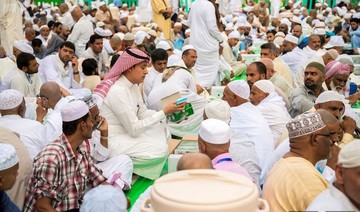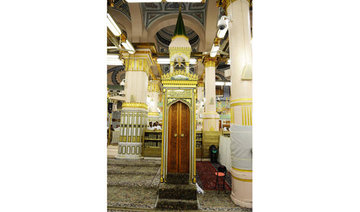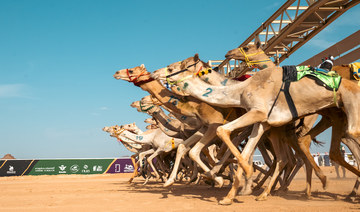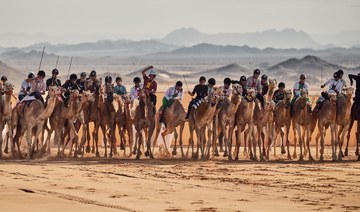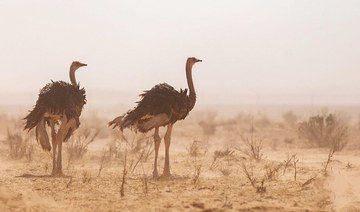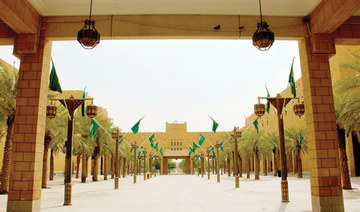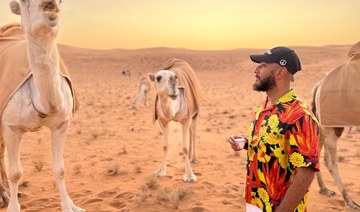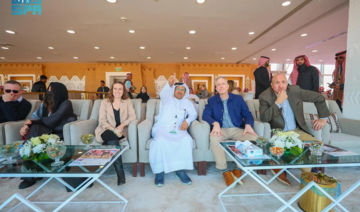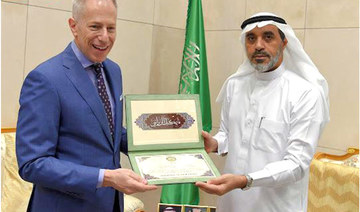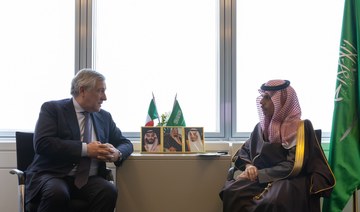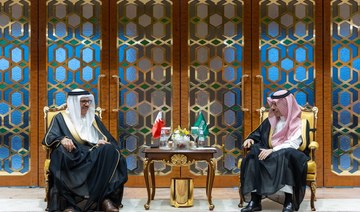The Prophet’s Mosque in Madinah is a place Muslims from around the world visit while performing Hajj and Umrah, or simply to pray (performing the salat) and visit Prophet Muhammad’s tomb.
One of the world’s largest mosques, the Prophet’s Mosque underwent several expansions throughout its history, starting with the days of the caliphs, followed by the Umayyads, the Abbasids, the Ottomans, and, finally, the Saudi era, during which it underwent the largest expansion in its history and was the first place in the Arabian Peninsula to be lit by electric light bulbs in 1909 (1327 AH).
The Prophet’s Mosque, also known as Al-Masjid Al-Nabawi, was the second mosque built by Prophet Muhammad (peace be upon him) in the first year of Hijrah (the Prophet’s migration with his followers from Makkah to Madinah, which was called Yathrib at the time).
The land on which the mosque was built belonged to two orphans, Sahl and Suhail, and was used as a place for drying dates. The Prophet planned the mosque’s structure to occupy a 50 by 49 meter tract of land and built it facing Jerusalem, the Muslim’s Qibla at the time. He dug the foundation and used palm leaves for the roof and trunks of palm trees as columns.
The Prophet also built his mosque with three doors, one of which was in the back and was called “Atikah” or the “Door of Mercy,” while the other was the “Door of Gabriel” and was the Prophet’s preferred entrance.
In the back of the mosque, there was a shady area for sheltering the poor and strangers known as “Al-Saffa.”
Prophet Muhammad did not build a roof for the entire mosque, so when it rained, water would drip on worshippers. The worshippers asked the Prophet to support the roof with mud, but he refused and said: “No, an arish like that of Moses” — a trellis roof like that of Moses.
In its early days, the mosque’s floor was not covered with anything until in 3 AH (624 AD), when it was covered with pebbles.
When the Qibla was changed to face the Kaaba instead of Jerusalem, Al-Saffa, which was in the southern part of the mosque, was moved to the northern part. The back door was closed, and a new door was opened in the north.
The Prophet’s Mosque underwent its first expansion in the days of Caliph Umar ibn Al-Khattab in 17 AH (638 AD). Caliph Abu Bakr Al-Siddiq did not work on expanding the mosque since he was busy with the Ridda Wars, also known as the Wars of Apostasy.
The mosque became very crowded with worshippers in the reign of Caliph Umar, so he bought the surrounding houses and included them in the mosque to expand it by 20 cubits from the west, 10 cubits from the south (the Qibla part), and 30 cubits from the north. No expansion, however, took place in the eastern part of the mosque as the rooms of the prophet’s wives were located there.
After that expansion, the mosque’s length became 140 cubits from north to south and its width 120 cubits from east to west. It was built in the same form chosen by Prophet Muhammad; the walls were built of bricks, palm-tree trunks were used as columns, the 11-cubit-high roof was made of palm leaves, and the flooring was made of garnet grits. Caliph Umar also added a 2-cubit-high smock to the mosque.
The expansion that took place in the days of Caliph Umar was estimated at about 1,100 square meters. It also gave the mosque six doors: Two in the east, two in the west, and two in the north.
During the reign of Caliph Othman in 29 AH (650 AD), the mosque became too small for the large number of worshippers, so he consulted the Prophet’s companions on expanding it and they found it a good idea.
Caliph Othman had the mosque’s walls built of carved stones and plaster, its columns of engraved stones and iron rods installed in lead, and its roof of teak wood. The six doors were left as they were following the expansion done by Caliph Umar.
The Prophet’s Mosque remained as it was after the expansion carried out by Caliph Othman and until the reign of Al-Walid bin Abdul-Malik in 88 AH (707 AD). Al-Walid wrote to the ruler of Madinah, Omar bin Abdul Aziz (86-93 AH / 705-712 AD), ordering him to buy the houses around the Prophet’s Mosque in order to expand it. He also directed him to include the rooms of the Prophet’s wives in the expansion.
Following the directives of Al-Walid, Omar bin Abdul Aziz expanded the Prophet’s Mosque and made the Prophet’s tomb part of it. Therefore, Al-Walid’s expansion was from three sides — east, north, and west — and the southern wall’s length became 84 meters, the northern wall 68, and the western one 100. The whole expansion was estimated at about 2,369 square meters.
The expansion during the reign of Al-Walid bin Abdul-Malik included building a hollow mihrab and minarets for the first time in the Prophet’s Mosque. A total of four minarets were built, one in every corner, as well as terraces on the mosque’s roof.
No expansion was done in the Prophet’s Mosque after Al-Walid’s expansion, but there were some repairs and renovations.
A fire erupted in the Prophet’s Mosque in 654 AH (1256 AD), and a number of Muslim caliphs and leaders contributed to restoring it. The first to contribute to was the last Abbasid Caliph, Al-Musta’sim Billah, who sent supplies and builders from Baghdad to fix the mosque in 655 AH (1257 AD).
The Abbasid caliphate ended with the fall of Baghdad at the hands of the Tatars. After that, a second fire erupted in 886 AH (1482 AD), destroying many parts of the mosque’s roof. Sultan Qaytbay, ruler of Egypt at the time, received word of the incident and, subsequently, sent supplies, workers, and materials and the mosque was roofed in 888 AH (1484 AD).
Qaytbay’s expansion, estimated at 120 square meters, was completed in 890 AH (1486 AD) and was the last done before the Ottoman and Saudi eras.
No change took place in the Prophet’s Mosque since Qaytbay’s expansion and reconstruction work for 387 years, but during this period, a lot of repair and renovation work was done to the minarets, walls, and doors, and the crescents above the minarets as well as the dome were replaced. Nevertheless, no complete demolition and reconstruction took place until the reign of Sultan Abdulmejid.
The Ottoman Caliph, Abdulmejid II, sent architects, builders, workers, supplies, and materials in 1265 AH (1849 AD) to reconstruct and expand the mosque. The process took 13 years. Materials used included red stone from Al-Jamawat Mountain west of Madinah (known today as Al-Haram Mountain). These stones were used for building columns, while walls were built of black basalt stone.
The largest expansion of all time in the Prophet’s Mosque took place during the reign of the late King Abdullah alongside his umbrella project. He ordered the installation of 250 umbrellas on the columns in the mosque’s courtyards to shade 143,000 square meters around the mosque. More than 800 worshippers can pray under each of these umbrellas.
Moreover, six tracks in the southern part of the mosque were shaded to protect pedestrians.
The umbrellas were specially made for the courtyards of the Prophet’s Mosque. They employ modern technology and operate with high proficiency. They were also tested in the manufacturing country and designed to be of two different heights to overlap and ensure no sun rays or rain reach worshippers. The height of the first group of umbrellas is 14.04 meters, while the second group is 15.03 meters tall. The height of all umbrellas when closed is 21.07 meters.
Madinah saw the largest expansion in the history of the Prophet’s Mosque in late 1433 AH (2012 AD), when King Abdullah laid the foundation stone to expand the mosque so it would be able to accommodate two million worshippers once the project was completed.
King Salman took up the torch after King Abdullah died, and stressed the importance of resuming work in the expansion project and other work that serves Islam and Muslims. Saudi Arabia’s leaders are all very keen to serve and enhance the Two Holy Mosques and provide all services in the holy sites so that pilgrims can easily complete Hajj and Umrah.
The Prophet’s Mosque: Great status and vast expansions in the Saudi era
The Prophet’s Mosque: Great status and vast expansions in the Saudi era
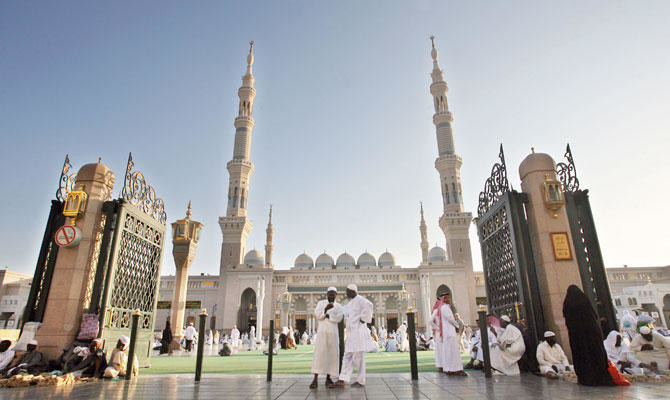
- The Prophet’s Mosque underwent its first expansion in the days of Caliph Umar ibn Al-Khattab in 17 AH (638 AD)
- The largest expansion of all time in the Prophet’s Mosque took place during the reign of the late King Abdullah alongside his umbrella project
Meet Rima Al-Harbi, the first Saudi female to win at the AlUla Camel Cup
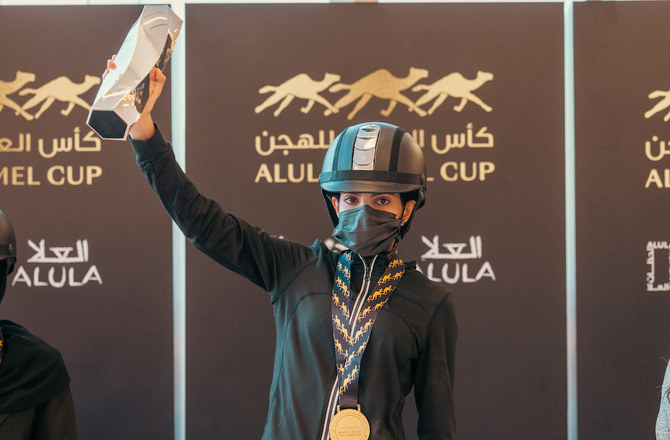
ALULA: “Our dream, as athletes, is to be able to represent our country; and for me to live my dream for my country — in my country — is the ultimate triumph,” Rima Al-Harbi told Arab News after making history this week as the first Saudi woman to win at the AlUla Camel Cup.
At last year’s inaugural competition, Al-Harbi was the only woman to compete in a field full of male riders. This year, the event included a women’s category. Al-Harbi returned. And this time she won.
“Most of the women I competed against this year have way more experience than me; it was truly a difficult race, in general,” Al-Harbi said. “But somehow, thanks to Allah, I didn’t feel like anyone challenged me. From the moment we started to when we reached the finish line, I was in first place.”
The 22-year-old, who was raised in nearby Madinah, where she still resides, grew up around camels. Both her father and grandfather competed in camel racing and she has a fierce love for the animal and for the sport. She credits her grandfather for encouraging her to learn how to ride when she was just seven years old. Now, she trains with her camel, Auf, for about two hours every day. She is continuing the family tradition and breaking records along the way.
Al-Harbi said that three of her sisters also ride camels, but “as a hobby.” She is the only one of her siblings to compete professionally.
Al-Harbi has opened a small training club for local women who want to try their hand at camel racing. Her aim is to strengthen the community and to find fellow Saudi women to join her journey.
“Since I have a deep love for the sport and have the opportunity and capability, why wouldn’t I want to help other women also get into the sport? These women want to try it as a hobby and we all have to start somewhere. I don’t take any funds for this; it is done out of pure passion. It is just about introducing the sport to women who are interested. I offer them guidance and advice, and we walk through the sport,” she said.
The four-day AlUla Camel Cup ends on Saturday. Al-Harbi did return the day after her victory to soak up the atmosphere and cheer on other riders, but don’t count on her being back for the final day.
“I will stay home to rest,” she told us with a laugh.
Endangered red-necked ostrich chicks born in royal reserve
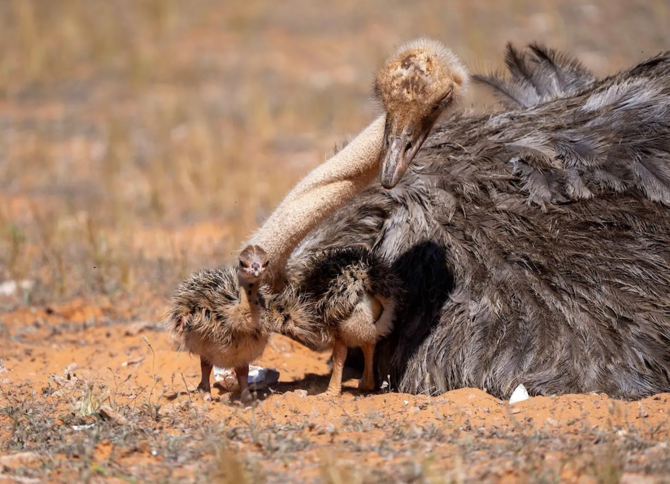
- Birds are part of resettlement program launched in 2021
- Sand gazelle, Arabian oryx among species being protected
RIYADH: The Imam Turki bin Abdullah Royal Nature Reserve Development Authority has announced the birth of three endangered red-necked ostrich chicks.
The birds have been considered extinct in the northern region of the Kingdom for a century and have now returned thanks to the efforts of the ITBA, the Saudi Press Agency reported on Friday.
The ITBA had initiated an ostrich-resettlement program in late 2021, aiming to establish a suitable natural habitat for a pair of the birds. This initiative bore fruit as the ostriches successfully adapted to the reserve’s environment, producing 12 eggs in the spring of 2024.
The ITBA has aimed to reintroduce rare species into their natural environments, as part of a broader commitment to wildlife development, biodiversity conservation, and environmental restoration.
Among the numerous rare creatures benefiting from these efforts are the sand gazelle and Arabian oryx.
The ITBA has 138 species in its care including Arabian wolf, various types of foxes, felines, hares, the Asian bustard among other birds, and reptiles.
The reserve covers an area of 91,000 sq. km in the northeastern part of the Kingdom. It is a popular destination for those interested in eco-tourism, bird watching and hiking.
The reserve also offers cultural experiences, allowing visitors to interact with the local Bedouin communities, learn about their traditional way of life, and enjoy authentic cuisine.
In February, the ITBA signed a memorandum of understanding with the King Abdulaziz Foundation for Research and Archives to document the heritage of the reserve.
The pact will ensure collaboration to conduct archaeological surveys and excavations, inventory inscriptions, document intangible heritage and social history, and identify grazing locations.
Saudi, UAE and Qatar secure wins on second day of AlUla Camel Cup
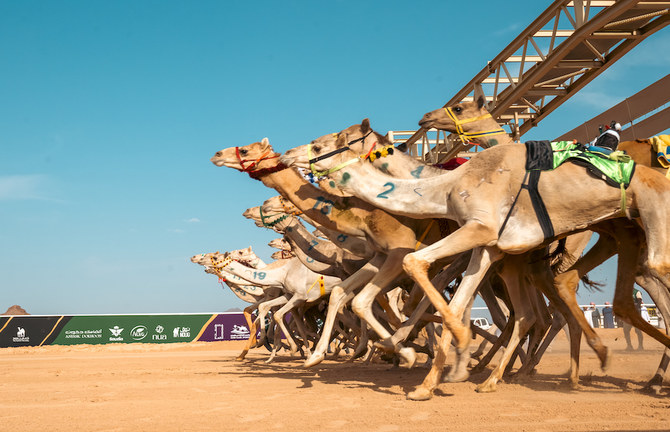
- Minister of Interior’s entry takes first race in the Hagayeg category
ALULA: Saudi Arabia, the UAE and Qatar provided the big winners on Day 2 of the second annual AlUla Camel Cup.
Held in unseasonably hot conditions, Thursday’s competition consisted of two 5 km categories, the Hagayeg and the Lagaya, with two races run in each.
Saudi Arabia’s Minister of Interior Prince Abdulaziz bin Saud bin Naif won the first Hagayeg race, much to the delight of spectators.
The Prince’s camel, aptly named AlUla, won in a time of 5 minutes 59.3 seconds. In the second Hagayeg race of the day, Shart, owned by Emirati Mohammed Al-Kutbi, took first place in a time of 5:57.8.
The day’s total prize pool of $6.83 million was split equally between the two categories.
Winners in each of the races received $870,000, second-place finishers earned $266,666, and those in third place received $133,333. The balance of the prize pool was distributed among the other finishers.
The event was organized by the Royal Commission for AlUla as part of the AlUla Moments calendar, in partnership with the Saudi Camel Racing Federation.
The 2024 AlUla Camel Cup offers spectators and participants a new and more expansive experience after the inaugural edition in March last year.
This year, designated Year of the Camel by the UN and the Ministry of Culture, the event pays homage to the desert animal that is so integral to the Kingdom’s heritage.
“The AlUla Camel Cup attracts the best riders and the best camels throughout not just the region, but the world,” said Mahmoud AlBalawi, executive director of the SCRF. “Qualification for the AlUla Camel Cup is deliberately challenging, with 11 camel races taking place under the federation’s jurisdiction throughout the season to qualify for this illustrious competition.”
AlBalawi said that the Saudi Camel Racing Federation’s programs “target all corners of Saudi Arabia in a bid to continue to grow and improve the cherished sport of camel racing. There are more than 50 camel racing tracks across the country, including the elite AlUla venue where the AlUla Camel Cup takes place.”
RCU’s chief sports officer, Ziad Al-Suhaibani, praised the participants and said: “The AlUla Camel Cup reflects the importance of camel racing as a symbol of the Kingdom’s heritage and culture.”
While the heritage sport dates from the seventh century, the event this year includes a more contemporary setup that caters to all the family. There are opportunities to take camel selfies, sample camel smoothies or listen to live folk music by local performers.
The final races take place on Saturday.
US Embassy marks 248th Independence Day with shared US-Saudi vision for space exploration
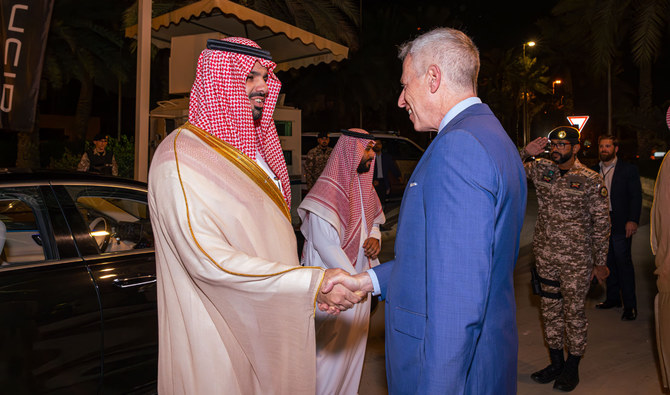
- Ambassador Michael Ratney welcomes hundreds of Saudi guests to space-themed Riyadh reception
RIYADH: The US Embassy in Riyadh celebrated the 248th anniversary of Independence Day on Thursday with a reception hosted by US Ambassador Michael Ratney.
The ambassador welcomed guest of honor Prince Faisal bin Abdulaziz bin Ayyaf, Riyadh Region mayor, along with Saudi officials, and hundreds of Saudi guests, as well as visitors from Washington, including members of the US Congress.
The space-themed Independence Day reception served as a symbolic celebration of the future of the US-Saudi cooperation in space, highlighting the profound benefits and possibilities of space exploration, research, and commercial development.
Ratney said the theme reflects the “shared ambition of the United States and Saudi Arabia to embrace opportunities in space, positioning both countries as pioneers in this frontier of innovation.”
The event evoked nostalgia for past achievements, such as the 1969 moon landing, while emphasizing ongoing advancements in space sciences, particularly commercial space exploration.
Ratney highlighted Saudi pioneers in space travel, such as Prince Sultan bin Salman, and astronauts Rayyanah Barnawi and Ali Al-Qarni.
An art installation, “Museum of the Moon,” by artist Luke Jerram, featured NASA’s high-definition imagery of the lunar surface.
According to the US Embassy’s statement, the collaboration between the US and Saudi Arabia continues to advance shared interests in diplomacy, commerce, culture, and more.
The US remains dedicated to enhancing shared US-Saudi shared interests in security and in fostering prosperity in the region, while also exploring new avenues for partnerships in areas such as the arts, education, entertainment, and tourism, it said.
Both countries are poised to explore further cooperation, including potential joint ventures in space, reflecting a vision for an even stronger US-Saudi relationship in the future, the statement added.
Saudi, Cypriot foreign ministers discuss relations
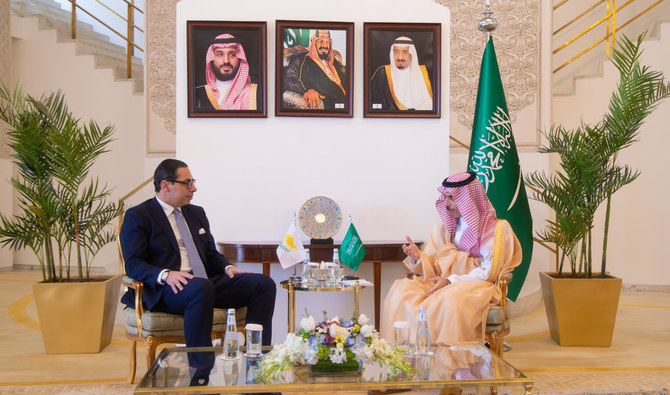
Saudi Minister of Foreign Affairs, Prince Faisal bin Farhan received his Cypriot counterpart, Dr. Konstantinos Kompos, at the ministry’s headquarters in Riyadh on Thursday.
During the meeting, the ministers reviewed the advanced bilateral relations between the Kingdom and the Republic of Cyprus, and ways to promote them in a variety of fields.
They also discussed ways to increase bilateral coordination on issues of common interest and reviewed international developments.





